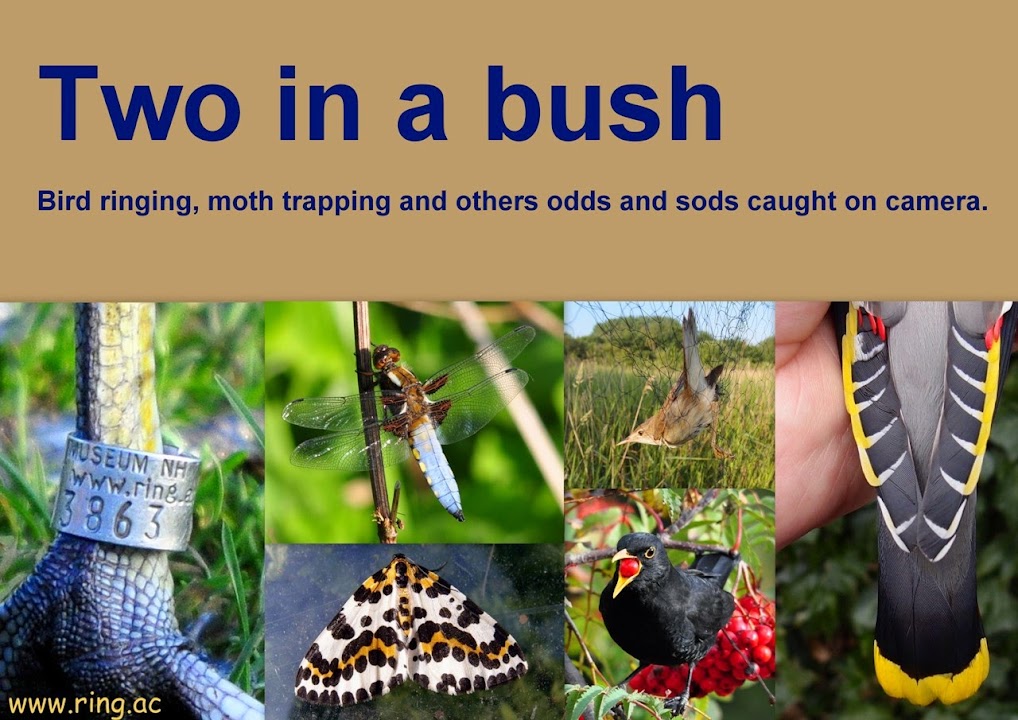It is fair to say that I am both surprised and disappointed that I haven't retrapped either of those ringed Siskins and that disappointment has been compounded by two I have photographed recently. I have got loads of photos of Siskins, some of which are really quite good, but that doesn't stop me from trying to take more, and I have done a bit of 'snapping' over the last week or so. When I review photographs I always look to see if I can read any rings, if present, and I managed to read part of the ring numbers of a couple of Siskins and, surprise surprise, they weren't birds I had ringed this winter. The first, a male photographed on 24th Jan, was wearing ring that started Z0..... which is the start of a sequence that I was using in the garden 2 to 3 years ago and certainly not this winter. The second was a female with a ring inscription that started with the letter S...... and another photo showed more of that ring number which pointed to it having been ringed in the garden last January.
 |
| Z0........ male Siskin |
 |
| The other photos of this bird revealed more of the ring number which, by a process of elimination, is almost certainly a bird that was ringed as an adult female on 22/01/2017 |
Regular readers of this blog may remember some photographs of Snipe roosting in a field of winter cereal that I posted on the blog last winter (link here). Snipe roosted in this field from November (when they were first found and up to 29 were counted) through to at least mid-January (when the crop started to grow and made the birds harder to see). I had never seen Snipe using an arable crop as a daytime roost site before and, knowing how traditional Snipe roosts usually are, I wondered if they would use the field again, especially if the type of crop changed. As things turned out the field was sown with rape in the autumn and I thought that change, and the fact that rape has a different structure, can get denser and a bit taller than autumn sown cereals during the winter, may put the birds off.
I didn't spot any birds using the field during November and the density of the crop meant any birds, if present, had a much better chance of remaining unseen, especially if they had chosen a different part of the field to roost in. It started to feel like I was looking for the proverbial needle in a haystack but I continued to scan the field from time to time. I probably could have got permission to do a walk through survey but it would have been very difficult to find a time when other people weren't around and I was concerned it may have drawn others to think it was OK to do the same, so I decided to stick with observations from the adjacent public footpaths to be on the safe side. Unfortunately there is trend for people in this area to think it is OK to walk around the headland of just about every field and even walk through crops with their dogs rather than sticking to the numerous public footpaths and public open spaces.
Anyway, I happened to be scanning the field about a week ago, on one of this year's rare sunny days, when I noticed a Snipe amongst the rape and it was in the same part of the field that the birds used last winter. Further observations revealed a few more and I eventually counted 10. A few days later I could see a similar number in the same area when a loud bang and some crashing from a building site about half a mile away caused a few more birds to pop their heads up and I ended up counting a minimum of 19. Unfortunately I didn't have my camera with me on either occasion but I have managed to get some images since.
 |
 |
| Spot the Snipe, not that you have any chance of finding it in this photo. |
 |
| Try again in this zoomed and cropped image but I wouldn't waste too much time trying. |
 |
| Same image again but even with a nice red arrow pointing it out you will probably struggle to see anything identifiable as a Snipe. |
 |
| .....and here is a tighter crop of the same image and you can just see the distinctive crown stripes of a Snipe's head. Now that was a difficult one. |



No comments:
Post a Comment